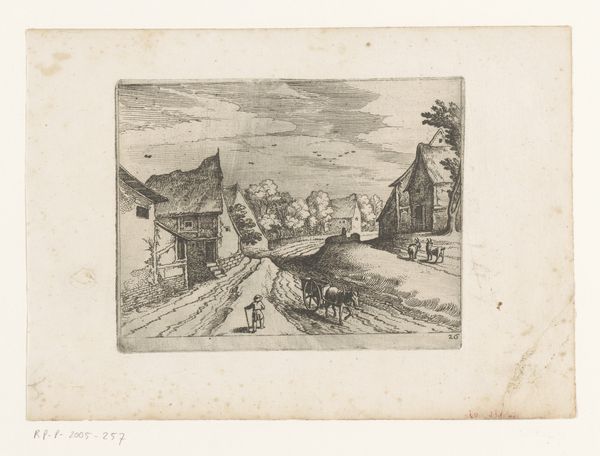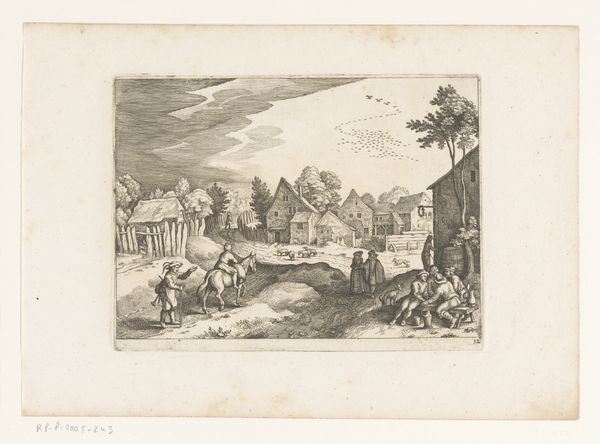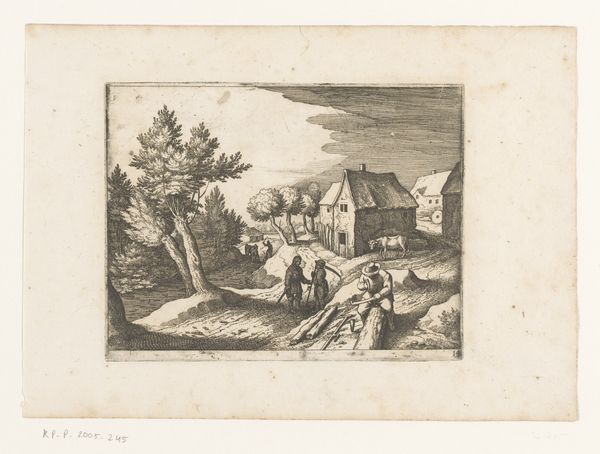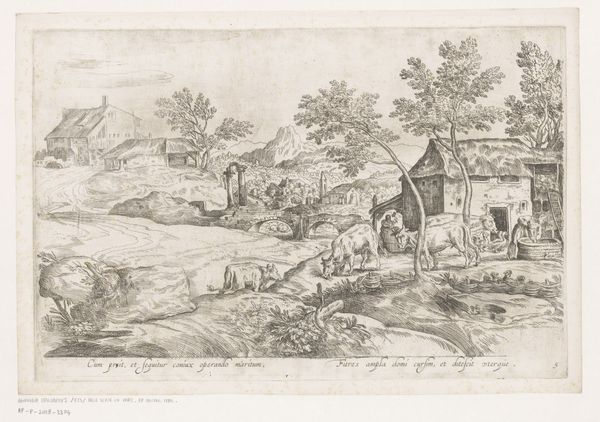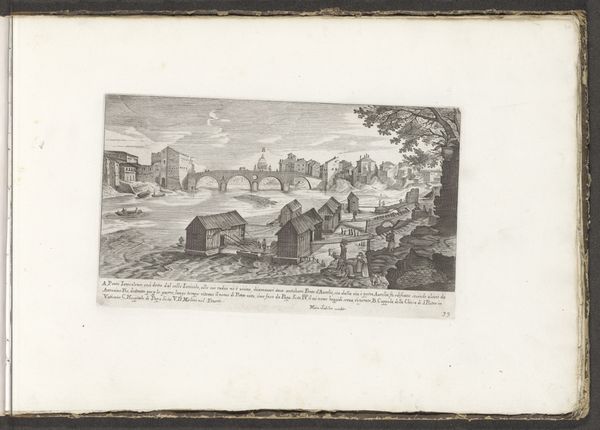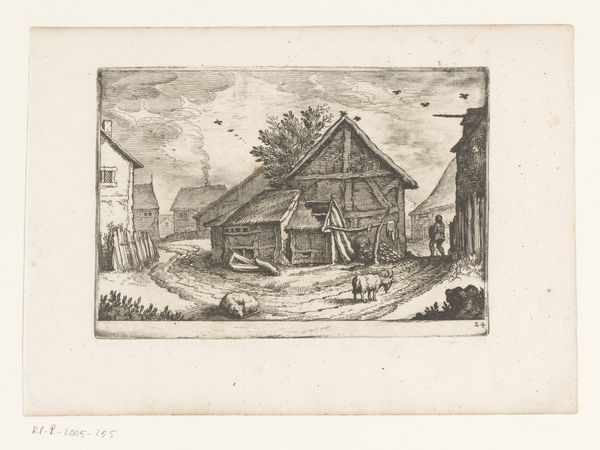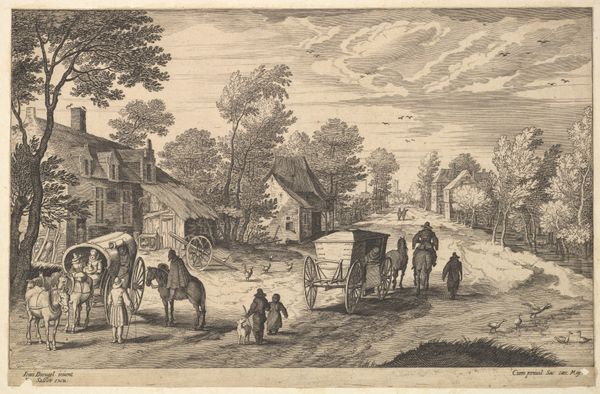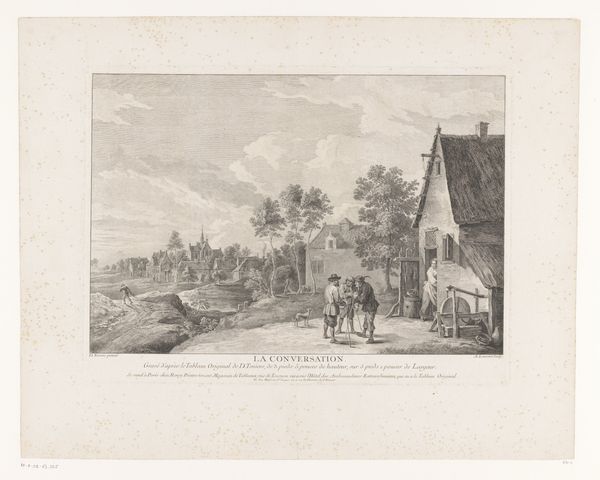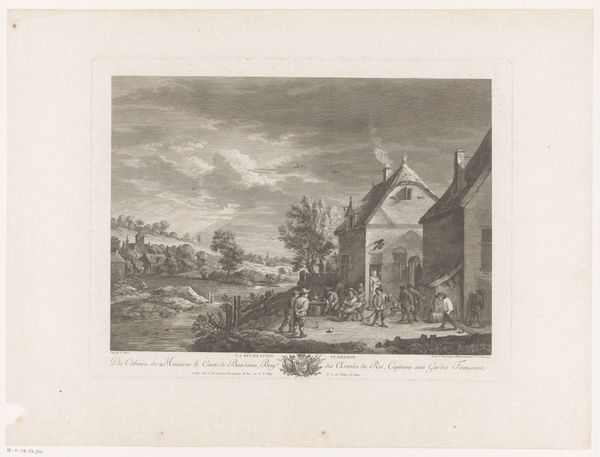
print, etching
#
narrative-art
#
baroque
# print
#
etching
#
landscape
#
figuration
#
history-painting
Dimensions: height 120 mm, width 165 mm
Copyright: Rijks Museum: Open Domain
Curator: Here we have "Apostel Filippus doopt de kamerling," created around 1620 by Matthäus Merian I. It’s an etching. Editor: There’s a charming stillness to it, a calm emanating from the central figures despite the busyness of the rest of the composition. It reminds me of pastoral scenes, with that home in the distance. Curator: The composition is certainly deliberate, using the landscape to reinforce the spiritual moment of baptism. Notice how the figures are positioned at the meeting point of the diagonal road. Editor: True, the setting and the baptism's context are crucial here. The story illustrates the early Church’s expansion, specifically including someone of high status, defying social expectations. I imagine Merian made the scenery look familiar to audiences at the time, drawing viewers in. Curator: Absolutely, the scene feels decidedly northern European, rather than Middle Eastern. But let’s consider the line work; it varies in weight, creating depth and directing our eye. It suggests the texture of garments and the natural forms. I'm intrigued by the contrast between the detail of the foreground figures and the more suggestive strokes defining the distant buildings. Editor: That domestication perhaps diminishes some of the revolutionary aspect inherent in the tale of Philip and the Ethiopian official’s encounter and equality. Do you think there could be political intention behind his compositional choices, perhaps reflecting shifting social views through his lens? Curator: That's plausible; art often serves ideological functions, whether overt or subtle. Focusing on Merian’s process though, I believe the etching, as a medium, enables a diffusion of ideas beyond traditional patronage circles, bringing Biblical stories into the homes of a broader audience. The crosshatching gives form and volume in ways engraving simply could not. Editor: And its dissemination speaks volumes regarding its cultural role at the time, not only as a beautiful object but as a didactic device, reflecting contemporary understandings of morality and belonging in religious life. A very worthwhile thing to observe here today. Curator: Precisely, a testament to both its aesthetic appeal and the sociopolitical values it embodies.
Comments
No comments
Be the first to comment and join the conversation on the ultimate creative platform.


